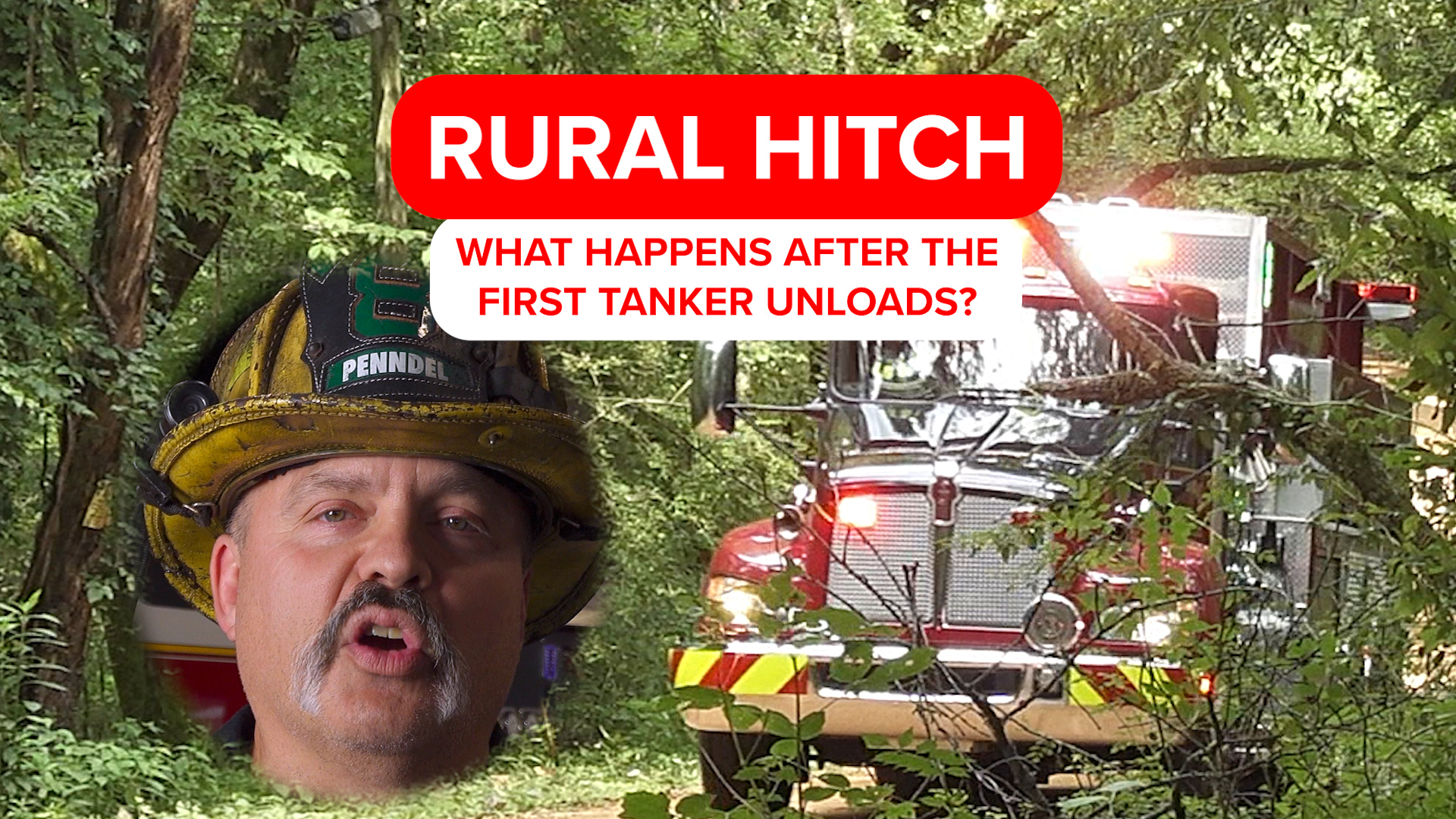Summary: To maintain a seamless water supply during rural fire operations, the second-arriving tanker must coordinate with the first to assess remaining water levels. If the first tanker is running low, a second 3-inch line is deployed at least 100 feet away to allow space for vehicle movement. As the first tanker empties, the second takes over without interruption. This tactic, central to the Rural Hitch operation, uses the Jumbo Clappered Siamese to manage efficient transitions and expandable water delivery, supporting continuous suppression efforts even in remote areas.
How to Execute a Seamless Tanker Swap Using the Rural Hitch
In rural firefighting, water supply is everything. When hydrants are out of reach, tankers and timing make the difference. That’s where the Rural Hitch comes in — a tactic that keeps water flowing with minimal hands and maximum efficiency. One of its key components? Executing a clean, uninterrupted switch between tankers using 3-inch hose and a Jumbo Clappered Siamese.
Second Tanker: Don't Just Arrive — Coordinate
When the second tanker hits the scene, the first step isn't grabbing hose — it’s checking in with the first tanker. How full is their tank? If they're nearing empty, it's go time for the transition setup.
Step Back to Step Up: Spacing the Second Hose
Take a 3-inch hose and connect it to your discharge, but don’t drop it right next to the first tanker. Leave at least 100 feet of space. This gives incoming tankers the maneuvering room they need to access the dump site cleanly, without jamming up the scene.
Ready to Feed: Connect and Wait
That hose connection from the second tanker sits in standby. Once the first tanker is nearing the bottom of its tank, it's your moment to throttle up. Start feeding water into the same Clappered Siamese that Tanker One was using. The clapper valve handles the switch automatically — no valve spinning, no radio calls.
Smooth Handoff: First Tanker Exits, Second Takes Over
With the second tanker now flowing water, Tanker One disconnects and heads back to the fill site. The operation continues without a drop in pressure or a pause in suppression.
Built-In Scalability: Keep That 3-Inch Line in Play
Even after a full dump site is established, don't coil up that 3-inch line just yet. It serves as a critical fallback. If a tanker's dump chute malfunctions, especially in freezing weather, that 3-inch hose becomes a manual offload option. It keeps every drop of water in play and every tanker useful.
The Takeaway: It's All About Flow, Not Flash
The Rural Hitch isn’t flashy — it's smart. It turns a basic nurse operation into a scalable water delivery system using gear most departments already have. The Jumbo Clappered Siamese and strategic 3-inch hose placement make continuous water supply not just possible, but practical, even with minimal manpower.
Want to deepen your rural water game? Check out the full breakdown of the Rural Hitch setup here.




Comments